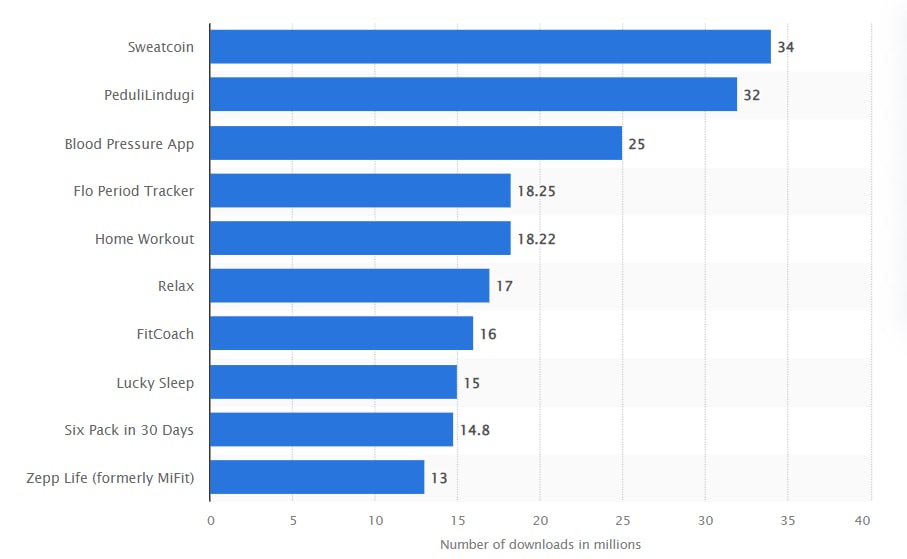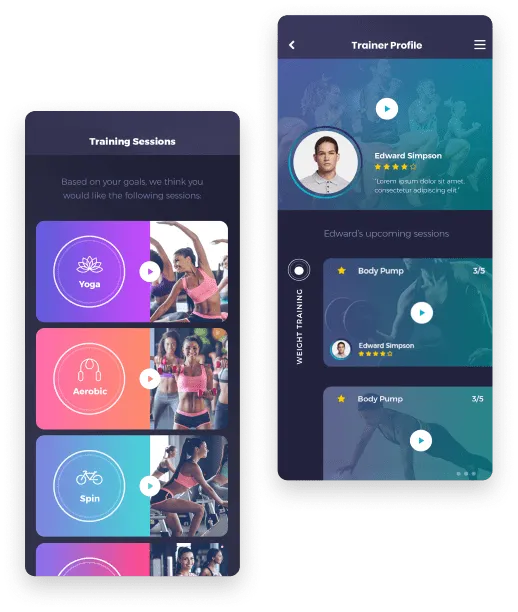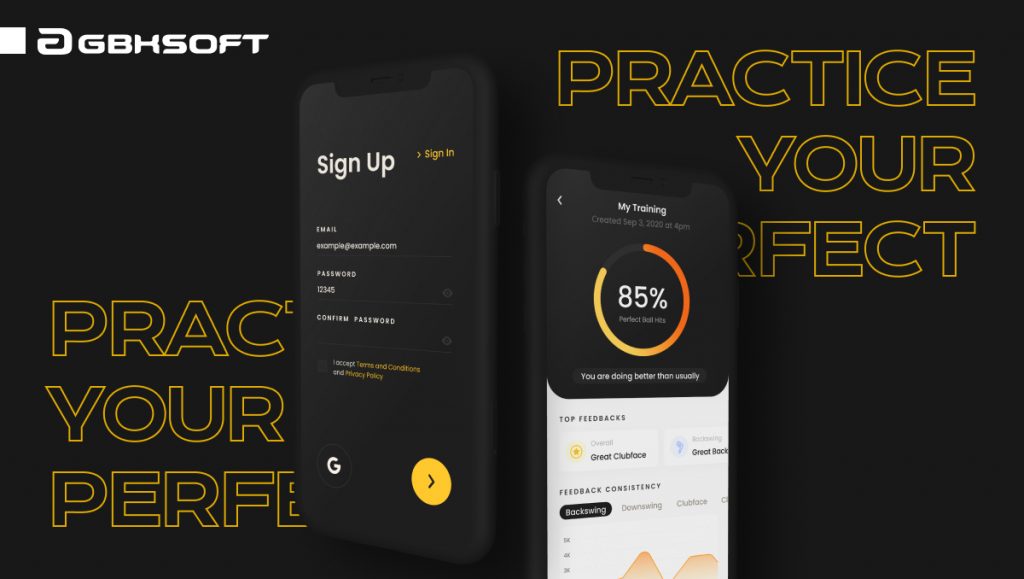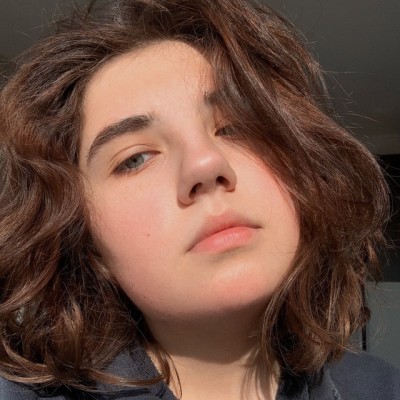Table of Contents
The health and fitness apps are a perspective niche for startuppers who seek new opportunities. And here are a few facts about why it is like that.
Firstly, there are statistics. The market of health and fitness apps is projected to grow significantly by 2030; some predict it will reach 30 billion by that time with a CAGR of 21.5%.
Secondly, there is still significant interest in fitness applications, considering that they become more and more technically advanced, and hence, arouse even more interest from prospective users.
However, it raises new challenges for app creators. Nobody will be impressed by a water tracker app or an app with premade workout sessions. The rise of artificial intelligence (AI), machine learning (ML), the Internet of Things (IoT), and virtual reality (VR) raised the expectations of app users.
So, to succeed in this market nowadays, you need to be innovative and tech-savvy. And don’t forget about having a unique concept that will allow you to compete with your competitors.
So, entering the market of health and fitness app development might not be as easy as you might imagine. However, Altamira can give you a hand here. We have delivered a bunch of health, sports, and fitness apps and are ready to share insights on the topic.
Learn the main info on fitness app development in this article.
The Main Types of Fitness Apps
The ecosystem of health and fitness app is quite diverse and include app types that serve fundamentally different purposes. For example, an app for sleep analysis and a workout plan app seems to belong to different app types, but they are still competing, at least within app stores where they all are united into one category.

Leading health and fitness apps worldwide in 1st half of 2022, by downloads, Statista
So, what are the main types of fitness apps?
Personal Trainer Apps
Under the term “personal trainer fitness app”, we mean an application where you can find a trainer that will guide you through your fitness program online. As you can guess, this type of mobile apps gained popularity during COVID lockdowns when gyms were closed.
Usually, such apps offer you to choose a trainer and book an appointment with them. Then, it also allows you to connect with a trainer through video calls for a workout.
Basically, this type of app takes the usually offline workouts supervised or managed by a trainer and transfers them to online. The goal here is to create an immersive experience for both parties so the online training would not lack anything from traditional offline gym workouts.
Workout Apps
Gym and workout apps provide their users with home workout plans and gym fitness programs. It might be recorded workouts with trainers or a set of interactive instructions that users should follow.
Usually, the app also contains different trackers to monitor the progress of users, as well as a social sharing feature where users can share their photos, achievements, and thoughts with the fitness community.
The value of workout apps is in the variety and quality of training programs, so the content is as much essential here as a convenient interface and a wide set of basic features.
One of the popular strategies for such apps will be to choose a niche and focus on a certain target audience. For example, the fitness app Sweat is tailored for women, and this helps them to stand out among other applications.
Diet and Nutrition Apps
Nutrition apps help people to manage and track what they eat. Often, the functionality of diet and nutrition apps might go together with workout applications, as a lot of fitness enthusiasts work to lose weight, and a healthy diet and regular physical activity is a key to this goal.
An average diet app consists of a food log, calorie tracker, lists of meal plans and recipes, educational info on how to plan your nutrition to achieve the desired goal (for example, lose weight or build up muscles), and the social features, like in workout apps.
Activity Tracking Apps
Any fitness tracker app is as straightforward as it sounds. There are dozens of fitness-related metrics fitness enthusiasts will want to track to monitor their progress or just simply brag about to their friends and family.
Usually, these metrics include the number of steps, the distance a person has run or biked, an average speed, calories burned, and heart rate. Some also allow you to track your exercises during a workout in the gym, for example, how many times you have done these or those exercises.
It is worth mentioning that up-to-date tracking apps work in combination with wearables powered by IoT.
Medical and Healthcare Apps
Healthcare apps are far away from the apps we described previously. If fitness apps are more about physical activity and everything related to them, then healthcare solutions help you to keep track of your bodily processes, illnesses, etc.
The main apps here will be period trackers, applications designed to support mental health, medication intake schedulers, etc.
Yoga and Meditation Apps
These apps also can vary one from to the other. Yoga apps might work the same way as personal trainer apps, only with yoga coaches, or as workout apps with guides on how to do yoga alone.
Medication apps will contain different instructions on how to start practicing it and tools that will help you enter the right headspace and focus your attention on this activity.
Sleep Tracking Apps
It is another category of health and fitness apps that works the best together with wearable devices. Sleep tracking apps collect data on your sleep habits and sleep quality and later shows the user the analysis of their sleep along with recommendations on how to improve it.
How to Diversify Your Fitness App from Dozens of Others?
Let’s talk about your own fitness app. To deliver a final product, you will need to understand the type of fitness app and functionality you want, choose a monetization, select a technical partner with experienced fitness app developers and launch the development process. But you probably know that, moreover, there are dozens of articles on the Internet covering these topics.
At the same time, knowing the algorithm and having a reliable software vendor won’t make your fitness app successful if it is another average fitness app that reminds other fitness solutions.
The key here is to come up with an innovative app idea that will not only satisfy your audience’s needs but will offer them something that can’t find in your competitors’ fitness applications.
So, how can you make your fitness application stand out among 71 thousand other health and fitness apps?
Here are a few approaches you might implement to create innovative fitness apps.
Choose a Niche
We have already mentioned this previously. To succeed, you can try to develop an application tailored to a narrow audience. You will need to carefully study your targeted audience and understand how to cater to their needs and expectations.
The narrow, concentrated audience will be less disparate, and you have a bigger chance to catch their attention and bring a positive experience with specific features.
For example, you decide to create a workout app for women who have recently had a child and want to return to or add physical activity to their life. You understand that your audience doesn’t have a lot of time to dedicate to working out, they might be still recovering and their physical capacities might be limited. Knowing these limitations, you are able to design an app suitable for the lifestyle and empathetic to their challenges.
Promoting such a fitness mobile app will be easier than another regular fitness app: you have obvious benefits for your chosen audience, you just need to find where you can reach them.
Research Opportunities
Though it seems like there is an app for anything in the health and fitness industry, most likely there is still a niche that mobile app developers have missed.
Health and fitness is a wide category, and while it creates competition between totally different applications, it also gives an opportunity to come up with an idea for something new and never delivered before.
Try to insert yourself into the industry, talk to fitness enthusiasts about their pains and problems, and learn about the latest app releases and innovation that appears in the industry. This way, you will be able to see a gap between users’ needs and market offerings and create a product to fill it.
Gamification
Gamification has already proved itself as a powerful tool to make your mobile apps more attractive. Fitness apps aren’t an exception, moreover, it helps to make workouts more interesting and appealing to people who struggle to follow up with regular training.
The new word into fitness app development has brought virtual reality. VR immerses people into thrilling scenarios where something as mundane and exhausting as a workout transforms into a fun adventure.
With VR gamification, you are limited only to the capacities of your imagination.
Ultra-personalization
Personalization is another common trend in the mobile app industry. For the fitness market, it is not only a trend, it is an essential part of the product value. The majority of users will prefer the mobile app that will create a personalized workout program specifically for the user’s fitness goals, physical state, preferences, and so on.
So, personalization is based on the app’s ability to collect and analyze data. Artificial intelligence and machine learning contribute a lot to these objectives and can enhance the precision of fitness programs offered by the fitness application to its users. Try to explore how AI and ML can bring your fitness mobile app development to a new level.
Use Innovation Wisely
Within this article, we have mentioned advanced technologies several times. AI, VR, IoT, etc. brings new approaches to fitness app development, and in turn, they generate new value for the fitness app market.
However, we would warn you not to use innovations just for the sake of innovations. In the best-case scenario, the functionality of the fitness app depends on users’ needs and behavior. Your decision to implement advanced technologies should be based on their capacity to increase the value of your app for its users.
Tech Aspect of Fitness App Development
When you have formed the concept of a fitness app, you should focus on the next important step: choosing a development team. If you decided to cooperate with an external vendor, you should carefully assess each candidate to understand if they can deliver a quality product.
So, the important tech aspects of fitness app development your vendor should be able to handle are:
- clear product vision: your partner should understand what features your application should have and how they should be prioritized;
- thought-through architecture and non-functional requirements: comprehension of these aspects will make the development process structured and efficient;
- established and tested process that ensures quality code and cost- and time-efficient development.
To deliver a fitness app, you will need the following development team composition:
- business analyst;
- mobile developers;
- back-end developers;
- UI/UX designers;
- QA engineers;
- project manager;
- software architect;
- experts in advanced technologies (if your fitness app requires their implementation).
Health and Fitness App Development Services with Altamira
Altamira can become your fitness app development partner. We have been delivering mobile apps for more than a decade, and a significant part of our work includes fitness and healthcare apps.
Cooperating with our team, you will benefit from:
- a team of more than 100 tech experts with significant experience in mobile app development;
- fast time-to-market and MVP approach that allows early market test
- a data-driven approach to mobile development;
- access to the expertise of professionals who have completed a big number of software projects;
- an established approach that allows us to minimize development risks;
- personal approach in the development and communication.
Altamira’s Cases in Health & Fitness App Development
Here are some of our most vivid cases in the fitness and health app market.
Anywhere Fitness

Anywhere Fitness is a live streaming application that powers up real-time online workouts with coaches. The app is tailored for two parties:
- those who want to add workouts but are able to schedule training mostly on short notice;
- personal trainers and coaches.
The app creates convenient conditions for both parties to cooperate. It is also designed to support wearables, so trainers will be able to understand better the abilities of their clients.
Main features include:
- Live Streaming
- Wearables Support
- Instant Messaging
- Payment System
- Push & Email Notifications
CTRL Golf

CTRL Golf is an IoT-powered app that helps golf players improve their skills. Players use a special sleeve with IoT sensors that gather data about players’ movements. The application integrated with the sleeve uses this info to provide instructions on how to better players’ swing techniques.
Main features include:
- User Accounts
- Sensors Connections
- Auto-lock
- Training & Swing Management
- Statistics in graphs and charts
Bottom Line
The fitness app market is well saturated, and it means two things: there is money in this niche, but there is also crazy competition. To gain success here you will need to think out of the box to bring something fresh and innovative, and at the same time not sacrifice the quality of the product.
able software development will help you to take care of the quality, but also sharpen your idea into a viable concept. Altamira can contribute to that using our experience with mobile development, including health and fitness apps.
FAQ




